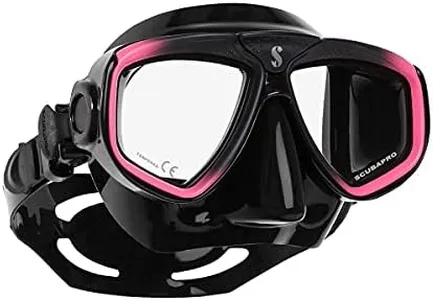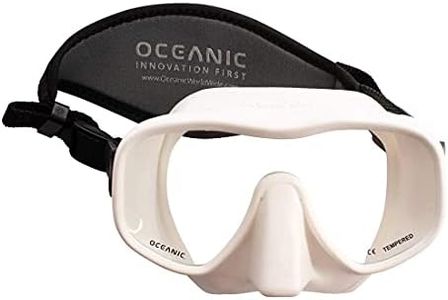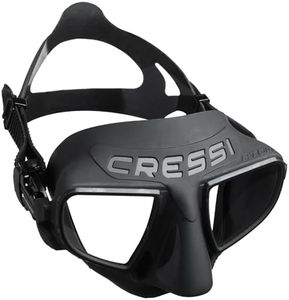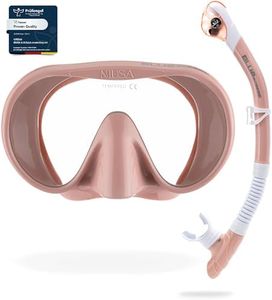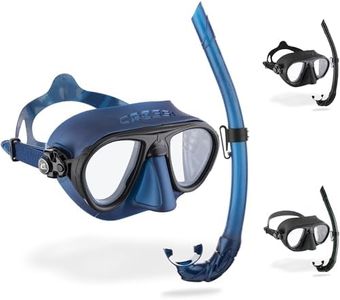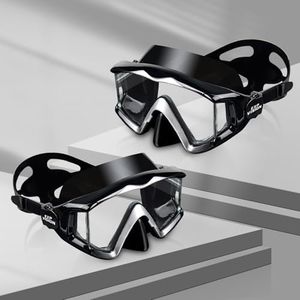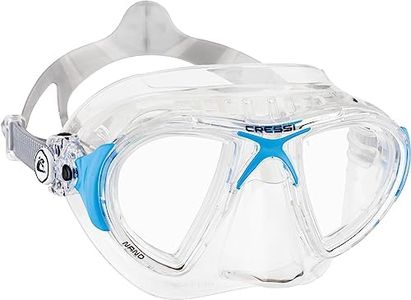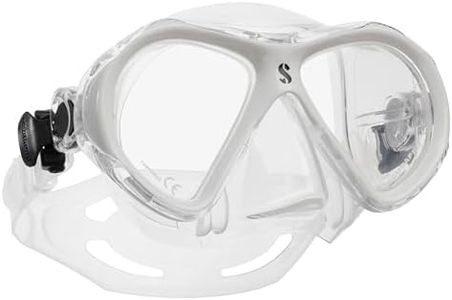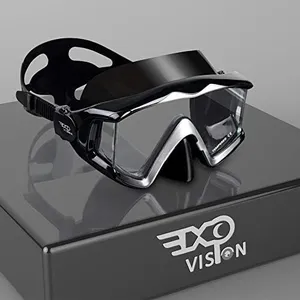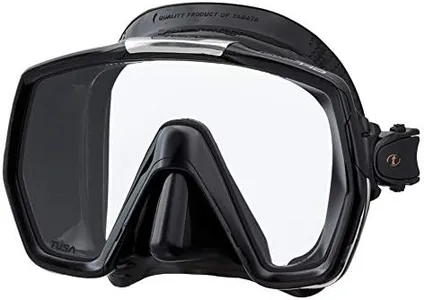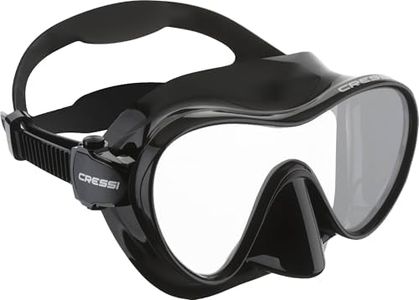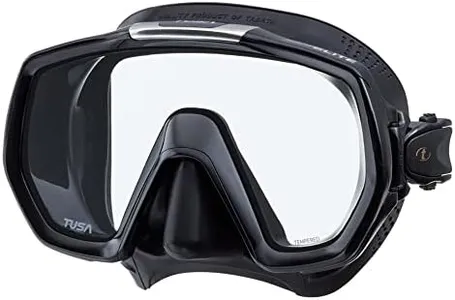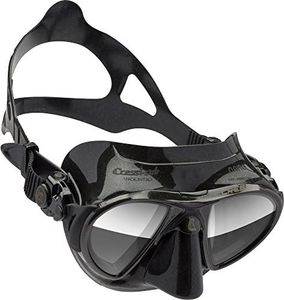We Use CookiesWe use cookies to enhance the security, performance,
functionality and for analytical and promotional activities. By continuing to browse this site you
are agreeing to our privacy policy
10 Best Freediving Mask
From leading brands and best sellers available on the web.Buying Guide for the Best Freediving Mask
Choosing the right freediving mask is important because it affects both your comfort and your ability to see clearly underwater. The best mask will fit your face well, create a good seal, and allow you to equalize easily during your dives. To make a smart choice, get familiar with the mask’s key features and think about how often and where you’ll be diving, as well as your personal preferences for comfort and visibility.Fit and SealThe fit and seal refers to how closely the mask contours to your face and how well it prevents water from leaking in. This is essential because a good seal ensures you can focus on your dive rather than constantly clearing water from your mask. Masks generally fit differently based on face size and shape, so you should try the mask on before purchase if possible. Check that the skirt (the soft part) creates a gentle, even seal by gently pressing it to your face without using the strap and inhaling through your nose; if it stays in place, it’s likely a good fit for you. Choose a mask that feels snug but comfortable and does not dig into your face. Your need for comfort and leak prevention should guide your choice here.
Internal VolumeInternal volume means the amount of air space inside the mask between your face and the lenses. This matters because a lower volume mask is easier to equalize and requires less effort to clear if water enters. Masks can be broadly divided into low-volume, medium-volume, and high-volume. Low-volume masks are best for deeper dives because they need less air for equalization, while high-volume masks may feel roomier but make equalization harder. If you plan to dive deeper or stay underwater longer, opt for a low-volume mask to make your dives easier.
Lens Type and Field of ViewThe lens type refers to whether the mask has one single lens, two separate lenses, or more. The field of view describes how much you can see through the mask. Single-lens masks generally offer an open, unobstructed view, while dual-lens masks can sometimes allow for a lower volume fit. The wider the field of view, the more aware you will be of your surroundings underwater. If seeing as much as possible is important for you, try masks on and look for those that maximize visibility, whether single or dual lens.
Skirt MaterialThe skirt is the soft part of the mask that touches your face, and its material impacts comfort and durability. Most high-quality masks use silicone skirts because silicone is soft, flexible, and long-lasting, creating a better seal than rubber or plastic. High-grade silicone also degrades less over time. Some skirts come in clear, colored, or black silicone, which can affect how much light enters the mask. Choose silicone for better performance, and try different colors to see which feels most comfortable or helps reduce glare for you.
Strap and Buckle SystemThis refers to how the mask stays in place on your head and how easily you can adjust it. A good strap and buckle system will let you quickly and securely adjust the fit, even while wearing gloves or in the water. Some straps are simple rubber, while others are softer or even come with padding. The buckle should be easy to use and not prone to breaking. Test the strap adjustment for ease and comfort, and ensure that it feels secure on your head, especially if you plan on doing more active or longer dives.
